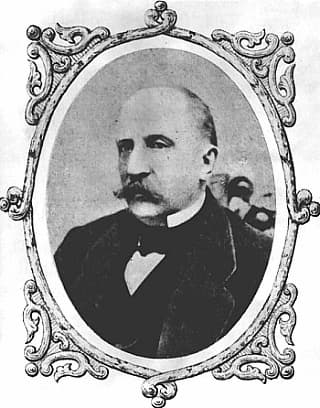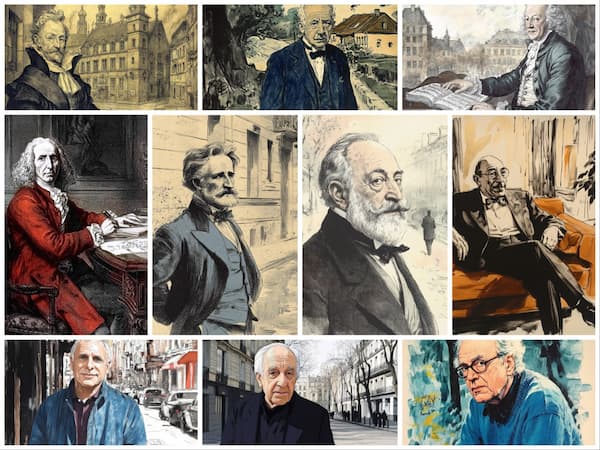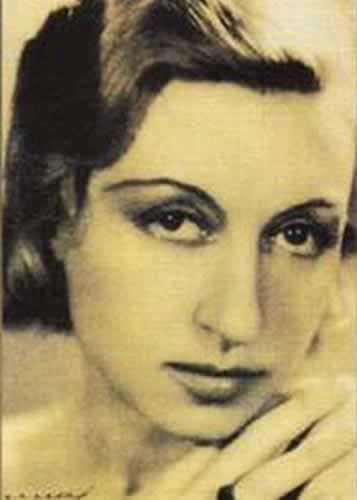We were looking at some music title pages from a collection in the Bibliothèque Nationale and found some interesting representations of music as part of the title page designs.
In this title page for a book of keyboard music from 1670, little putti hold up a banner with the title. At the center bottom is a music book, to be tied closed with ribbons, flanked by a two-manual harpsichord on the left (without its legs), and a virginal, normally played on a tabletop, on the right. On the back wall, from the left, are wind instruments, including a cornett in curved wood, a recorder, and a racket, shown with its distinctive cylindrical body. To the right is a guitar. On the other side of the banner is a lute and then a viol with a pointed Baroque bow laid over the top.
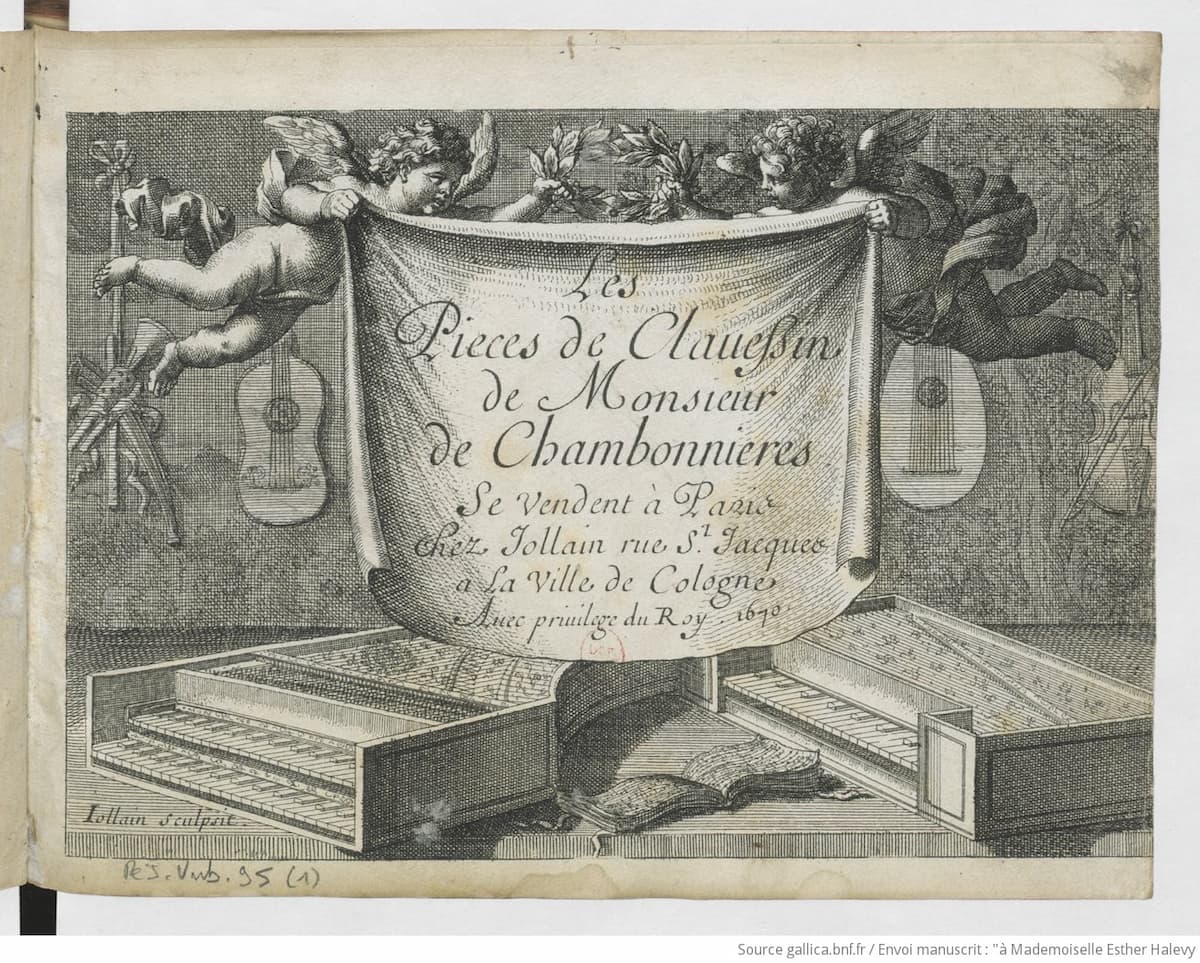
Jacques Champion de Chambonnières: Les pieces de clavessin de Monsieur de Chambonnieres, Paris: Chez Jollian, 1670 (Gallica, ark:/12148/cb166514770)
Jacques Champion Chambonnières: Allemande la loureuse in D Minor (Christophe Rousset, harpsichord)
The publishers Le Roy and Ballard, founded by Adrian Le Roy and his cousin Robert Ballard in 1551, used title-page frames filled with instruments and player: sat the top right, Justice wealds her sword, and below her, are two putti playing viols. Music books frame the grotesque at the bottom centre. Two more putti inhabit the bottom left corner, playing two more viols. All together, the four putti give us an entire consort of viols, from large to small. In the top right corner, an unreadable label seems to indicate a female mathematician specialising in geometry, with her book of drawings and a T-square.
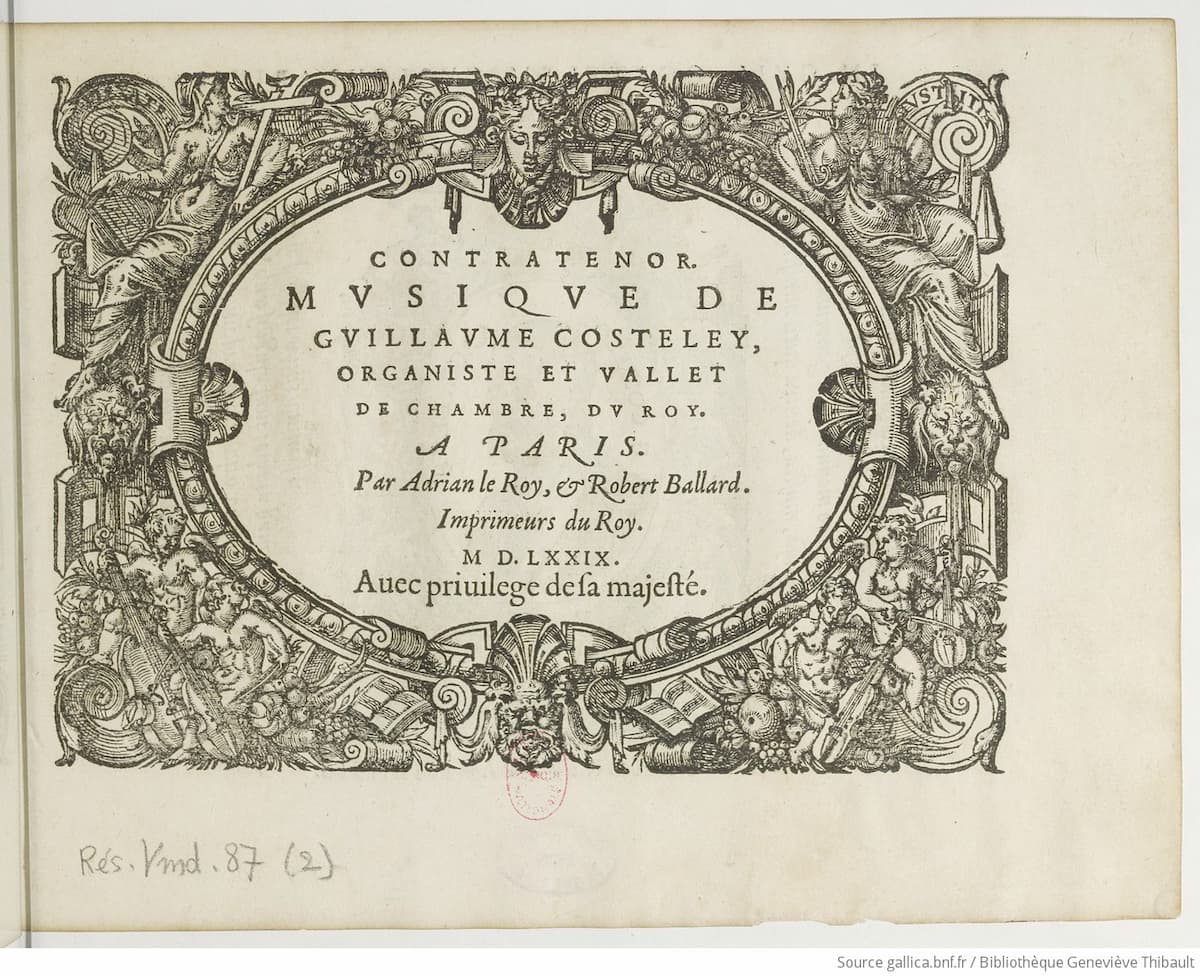
Guillaume Costeley: Musique de Guillaume Costeley, organiste ordinaire et vallet de chambre du… roy de France Charles IX…, Paris: A. Le Roy et R. Ballard, 1579 (Gallica, ark:/12148/bpt6k9928383)
Guillaume Costeley: Allon, gay, gay, gay bergeres (Lamentabile Consort)
A composer only identified as M. R** set Jean-Baptiste Rousseau’s text for his one-act Interméde, Circé. The print has a lovely title frame that includes gentlemen in the fashion of the day playing all sorts of instruments. From the top right: a violinist, a man holding some music; at the bottom, two natural horn players flank a viola da gamba player. On the left side is a singer under another violinist. At the top centre appears to be a conductor. Next to the two violinists are, on the left, a trumpet and an oboe and, on the right, a natural horn, a recorder, and an oboe. The addition of all the birds gives us representation of singers. The publisher Robert Ballard was a grandson of Robert Ballard in the previous entry, and the first of his family to be named music publisher to the king of France.
![M. R**: Circé: Intermède en un acte, [1790] (Gallica, ark:/12148/cb166580736)](https://interlude-cdn-blob-prod.azureedge.net/interlude-blob-storage-prod/2023/10/Circe____Intermede_en_un_Rambert_17_btv1b10308931b.jpg)
M. R**: Circé: Intermède en un acte, [1790] (Gallica, ark:/12148/cb166580736)
Jean-Baptiste Morin: Circé: Air en menuet – Ce n’est point par effort qu’on aime (Cécile Van Wetter, soprano; Almazis; Iakovos Pappas, cond.)
Songs by François Martin, published by Robert Ballard in Paris in 1668 has at its top centre, two putti holding music with the notes E-F-E-C. On the right is a man playing panpipes, with another putti playing a lute below him. On the left is a laurel-crowned man playing the lyre, with a viola da gamba player below him. It may be that the two large figures are Orpheus (on the left) and Pan (on the right) but Pan doesn’t have his goat legs.
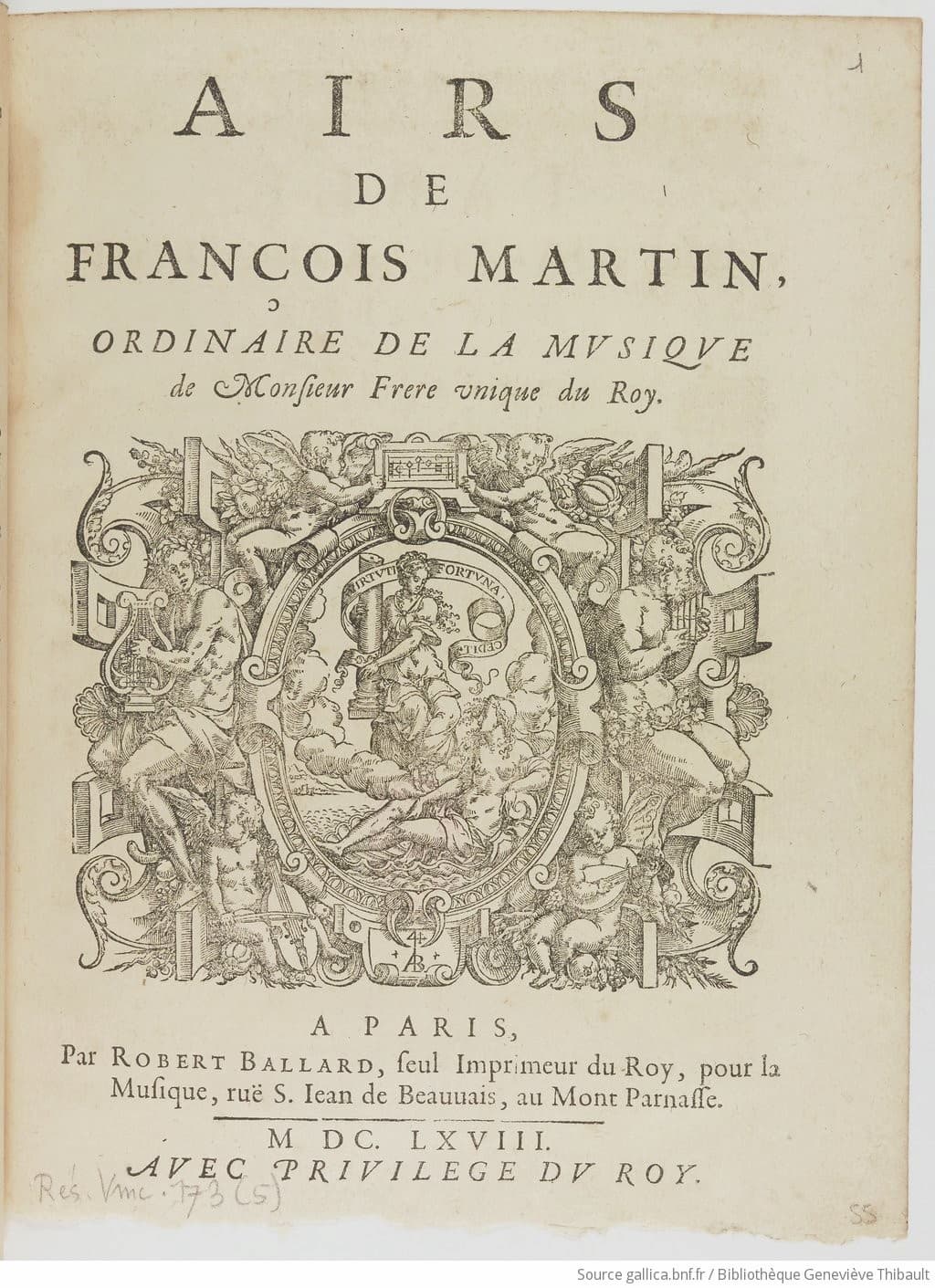
François Martin: Airs, Paris: Robert Ballard, 1668
In a music book from the next year, Ballard’s title page has gotten even more ornate. Orpheus, in the middle, is surrounded by the 9 Muses, all with some kind of instrument (even though only one of the muses, Euterpe, was the muse of music). From the top right, under Pegasus, the flying horse, we have a trumpet, a lute, an unknown instrument held in one hand (perhaps percussion?), and in the bottom right, a muse holding a harp and a music book. At the center bottom is a river god, pouring out the waters from a vessel. A viola da gambist is in the bottom left corner, a racket is held up like a trumpet, and a muse plays a portative organ. At the top right, a muse holds a cornett, sitting next to a muse who may be singing. Above them all is a putto launching off with a laurel wreath, traditionally used to crown the victorious. The whole image is clearly a play on the publisher’s address, given as Rue Saint Jean de Beauvais, at Mount Parnassus.
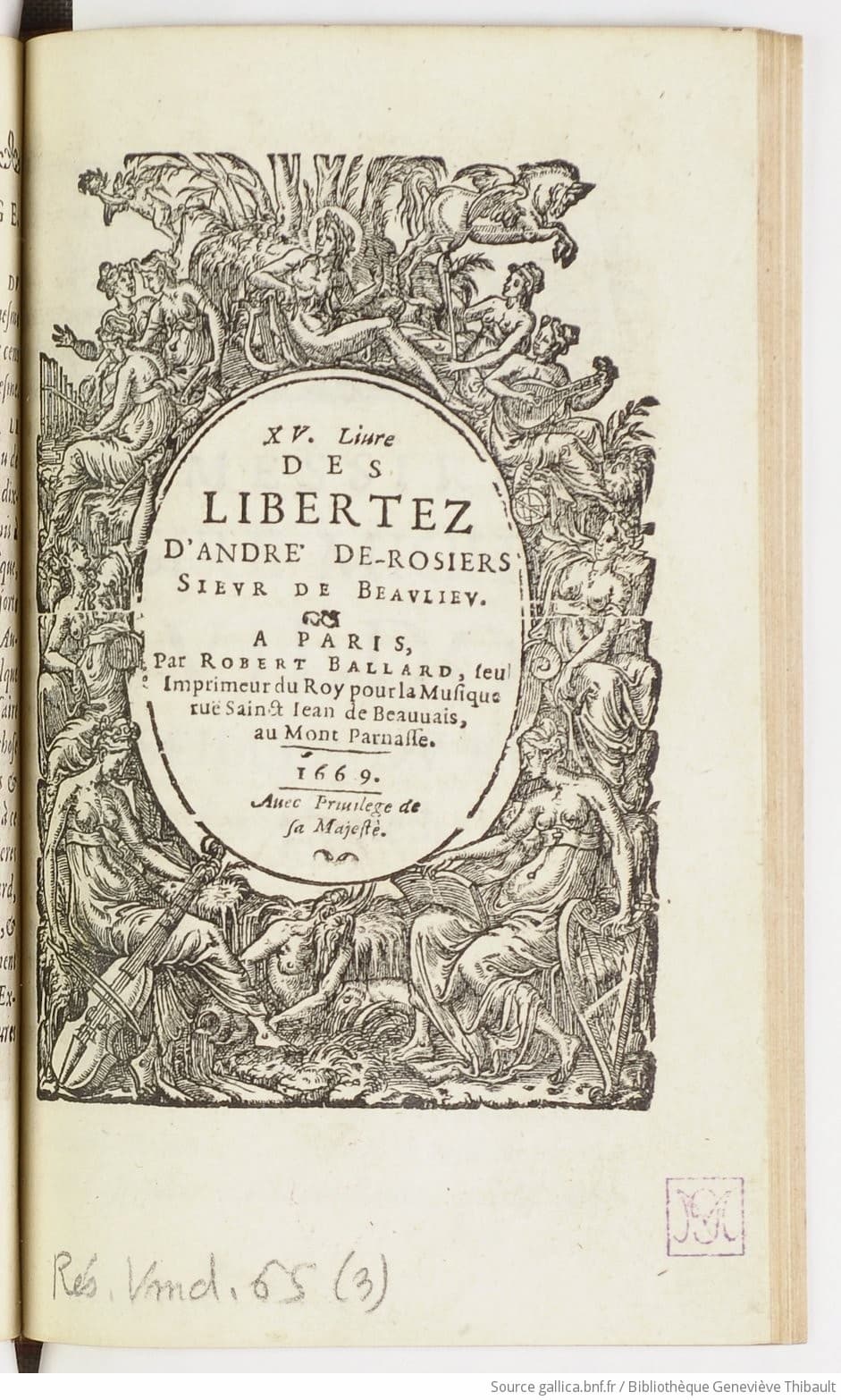
André de Rosiers: XV. livre des libertez…, Paris: Robert Ballard, 1669
In this exquisite title page from 1660, Instruments of all sorts surround a choir of putti. From the top right, we have a flute, a horn, some kind of wooding, two sizes of violas da gamba, pan pipes, a harp in front of a lyre, a trumpet, and a flute. On the left side, from the top down, we have more martial instruments: trumpets, kettle drums, a lute, a guitar, bagpipes, a tambourine, a hurdy-gurdy, a tromba marina, and a side drum. The center putto holds a book of music and others hold scrolls of music.
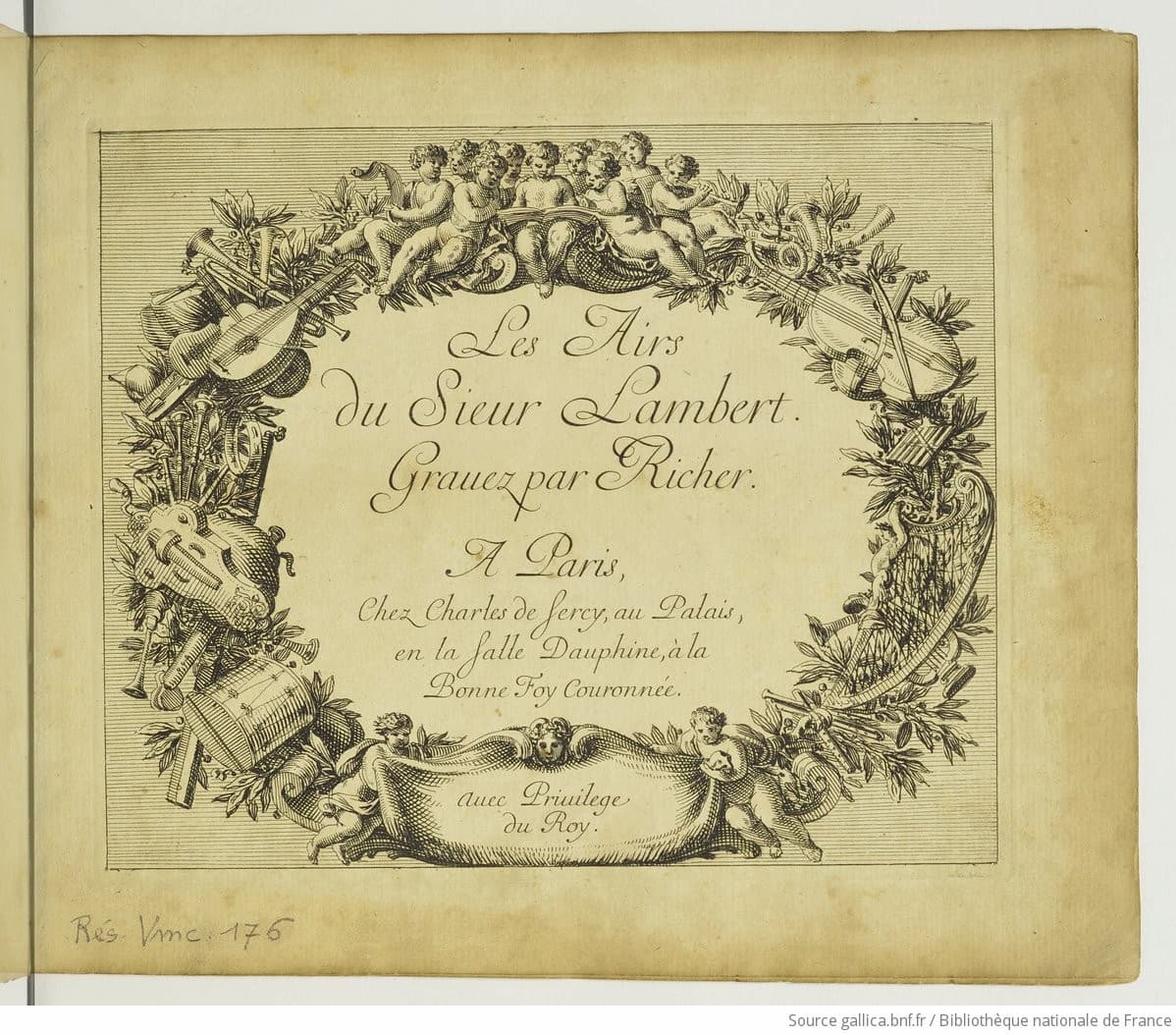
Michel Lambert: Les Airs du Sieur Lambert, Paris: Charles de Sersy, 1660 (Gallica, ark:/12148/btv1b53059236j)
Michel Lambert: Vos mépris chaque jour (Philippe Jaroussky, countertenor; L’Arpeggiata; Christina Pluhar, cond.)
A German title page from 1583 has a viola da gamba player in the top right, a recorder player below, and a putto playing the harp in the bottom right corner. At the enter bottom, a windswept woman plays a portative organ. In the bottom left corner, a putto seems to be wrestling with a guitar-shaped viola da gamba- the body is shaped like a guitar and there’s no bow, but there are knotted frets and an animal head-stock just as a viola da gamba would have. Above is a lyre player and in the top left corner, a putto is approaching a round-bodied string instrument.
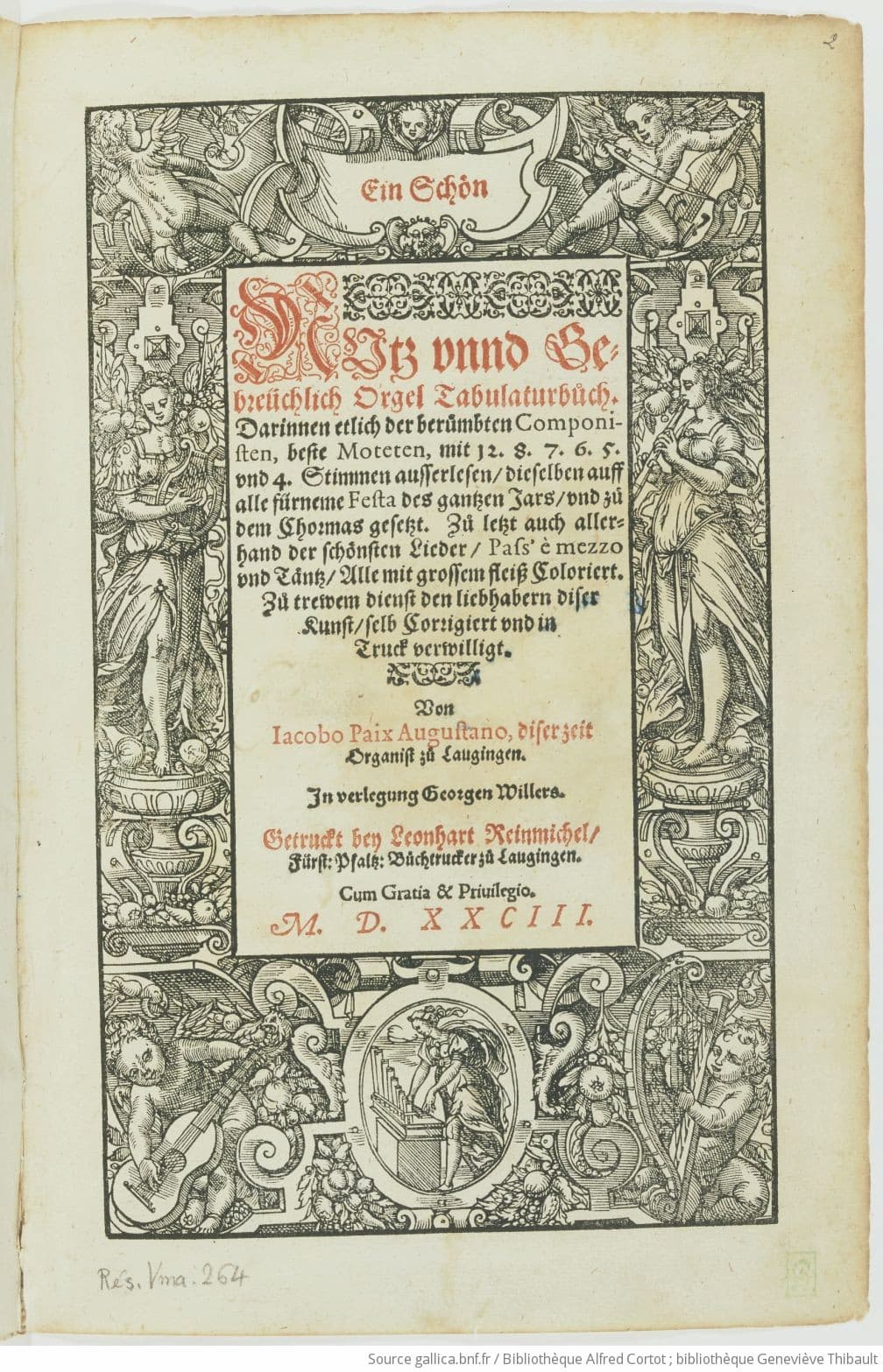
Jacob Paix: Ein schön nutz unnd gebreüchlich Orgel Tabulaturbuch. Darinnen etlich der berümbten Componisten, beste Moteten mit 12.8.7.6.5. und 4. Stimmen ausserlesen, dieselben auf alle fürneme Festa des gantzen Jars, und zu dem Chormas gesetzt. Zu letzt auch allerhand der schönsten Lieder, Pass’è mezzo und Täntz, alle mit grossen fleiss coloriert. Zu trewem, dienst den Liebhabern diser Kunst, selb Corrigiert und in Truck verwilligt… Laugingen: Leonhart Reinmichel, 1583 (Gallica, ark:/12148/bpt6k12804875)
Jacob Paix: Ungaresca et Saltarello (Jacques Kauffmann, organ)
The Austrian-Italian Giovanni Girolamo Kapsperger (aka Johannes Hieronymus Kapsberger) was a noted composer of lute and theorbo. His 1612 book of motets for voice and basso continuo was published in Rome. The architectural frame on the title page includes two angels with trumpets on either side of Kapsperger’s coat of arms. In two niches we have kings, one playing the organ and the other the harp.
![Johannes Hieronymus Kapsberger: Libro Primo di Motteti passeggiati a una voce / del sig. Gio. Girolamo Kapsperger nobile alemanno ; raccolto dal sig. Francesco de Nobili. Roma : [s.n.], 1612 (Gallica: ark:/12148/bpt6k12802721)](https://interlude-cdn-blob-prod.azureedge.net/interlude-blob-storage-prod/2023/10/Mottetti_passeggiati_a_una_voce_Kapsperger_Giovanni_bpt6k12802721.jpg)
Johannes Hieronymus Kapsberger: Libro Primo di Motteti passeggiati a una voce / del sig. Gio. Girolamo Kapsperger nobile alemanno; raccolto dal sig. Francesco de Nobili. Roma: [s.n.], 1612 (Gallica: ark:/12148/bpt6k12802721)
Giovanni Girolamo Kapsberger: Pietà, di chi si more (Marco Horvat, voice and theorbo)
In another book published in Rome in 1612, the title page has a finely engraved coat of arms at the enter, with martial images down the right side (armoured man, cannon, shield) and music images down the left side: Apollo with a laurel crown holding a lyre, a trumpet and a lute behind him, his foot resting on a book of music, a viola da gamba, a lute and other trumpet-like instruments behind. These songs were essentially solo madrigals with a plucked string accompaniment.
![Johannes Hieronymus Kapsberger: Libro Primo di Arie passeggiate a una voce con l'intavolatura del Chitarrone / del sig. Girolamo Kapsperger nobile alemanno ; raccolto dal sig. cav. fra Jacomo Christoforo ad Andlaw del ordine di S.to Gio. Battista Roma : [s.n.], 1612 (Gallica: ark:/12148/bpt6k12802684)](https://interlude-cdn-blob-prod.azureedge.net/interlude-blob-storage-prod/2023/10/Arie_passeggiate_a_una_voce_.Kapsperger_Giovanni_bpt6k12802684.jpg)
Johannes Hieronymus Kapsberger: Libro Primo di Arie passeggiate a una voce con l’intavolatura del Chitarrone / del sig. Girolamo Kapsperger nobile alemanno ; raccolto dal sig. cav. fra Jacomo Christoforo ad Andlaw del ordine di S.to Gio. Battista Roma: [s.n.], 1612 (Gallica: ark:/12148/bpt6k12802684)
Giovanni Girolamo Kapsberger: I’vo piangendo i miei passati tempi (Akantus)
In the book of music by Bénigne de Bacilly, a music book is foremost at the top centre, with a grotesque playing a double trumpet below. On the left side, what might be a faun, but with most mysterious legs, plays the panpipes while a putto holds up his music for him. On the right side, a woman with the same strange legs sings and plays the harp with the assistance of another putto.
![[Bénigne de Bacilly], Les trois livres d'Airs regravez de nouveau en deux volumes augmentez de plusieurs airs nouveaux, de chiffres pour le théorbe, et d'ornemens pour la méthode de chanter, Paris: s.n., 1668 (Gallica: ark:/12148/bpt6k1280022f)](https://interlude-cdn-blob-prod.azureedge.net/interlude-blob-storage-prod/2023/10/Les_trois_livres_dAirs_regravez_Bacilly_Bertrand_bpt6k1280022f.jpg)
[Bénigne de Bacilly], Les trois livres d’Airs regravez de nouveau en deux volumes augmentez de plusieurs airs nouveaux, de chiffres pour le théorbe, et d’ornemens pour la méthode de chanter, Paris: s.n., 1668 (Gallica: ark:/12148/bpt6k1280022f)
Benigne de Bacilly: Les airs profanes, Part 2 – Quoy! ne voulez vous rien comprendre (Claudine Ansermet, soprano; Paolo Cherici, theorbo)
These books in the Blibliothèque Nationale are from the library Geneviève Thibault, comtesse Hubert de Chambure (1902–1975), who was instrumental in the revival of interest in early music. As a musicologist, her work started with a study of John Dowland, and then expanded to cover work on musical iconography. Since 1971, she was one of the co-founders of the Répertoire International d’Iconographie Musicale (RIdIM), a group that continues today to document music images.
For more of the best in classical music, sign up for our E-Newsletter

